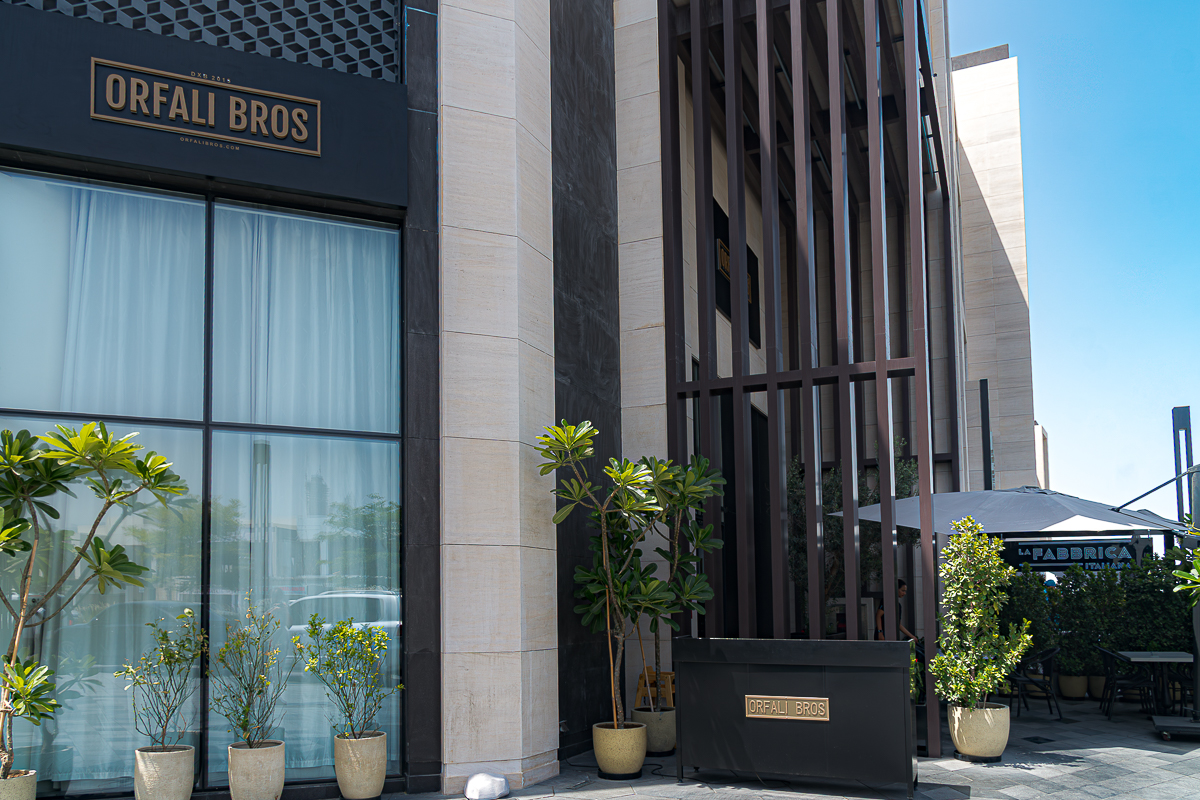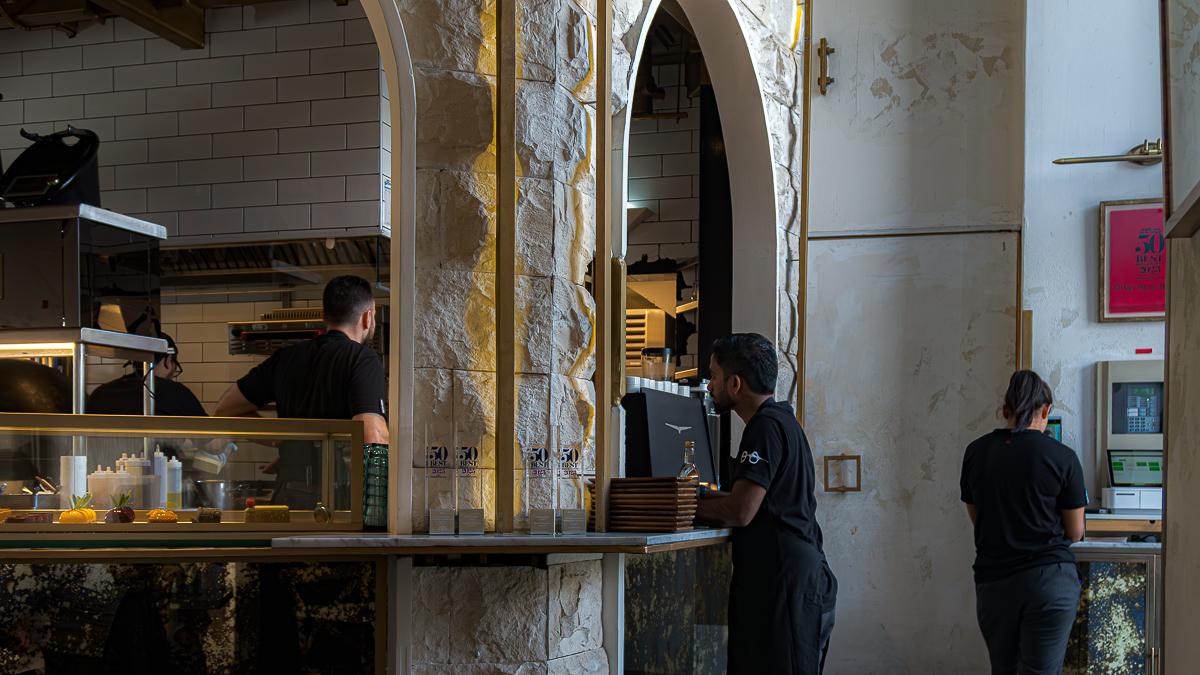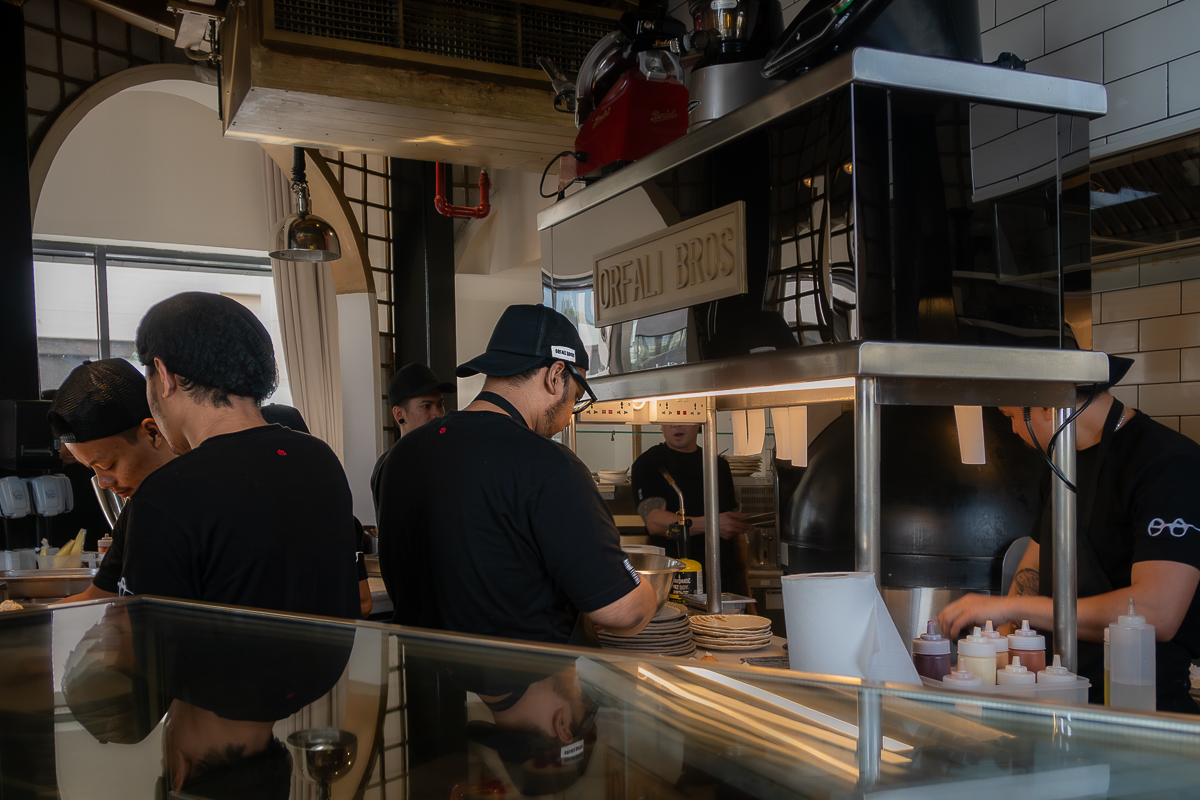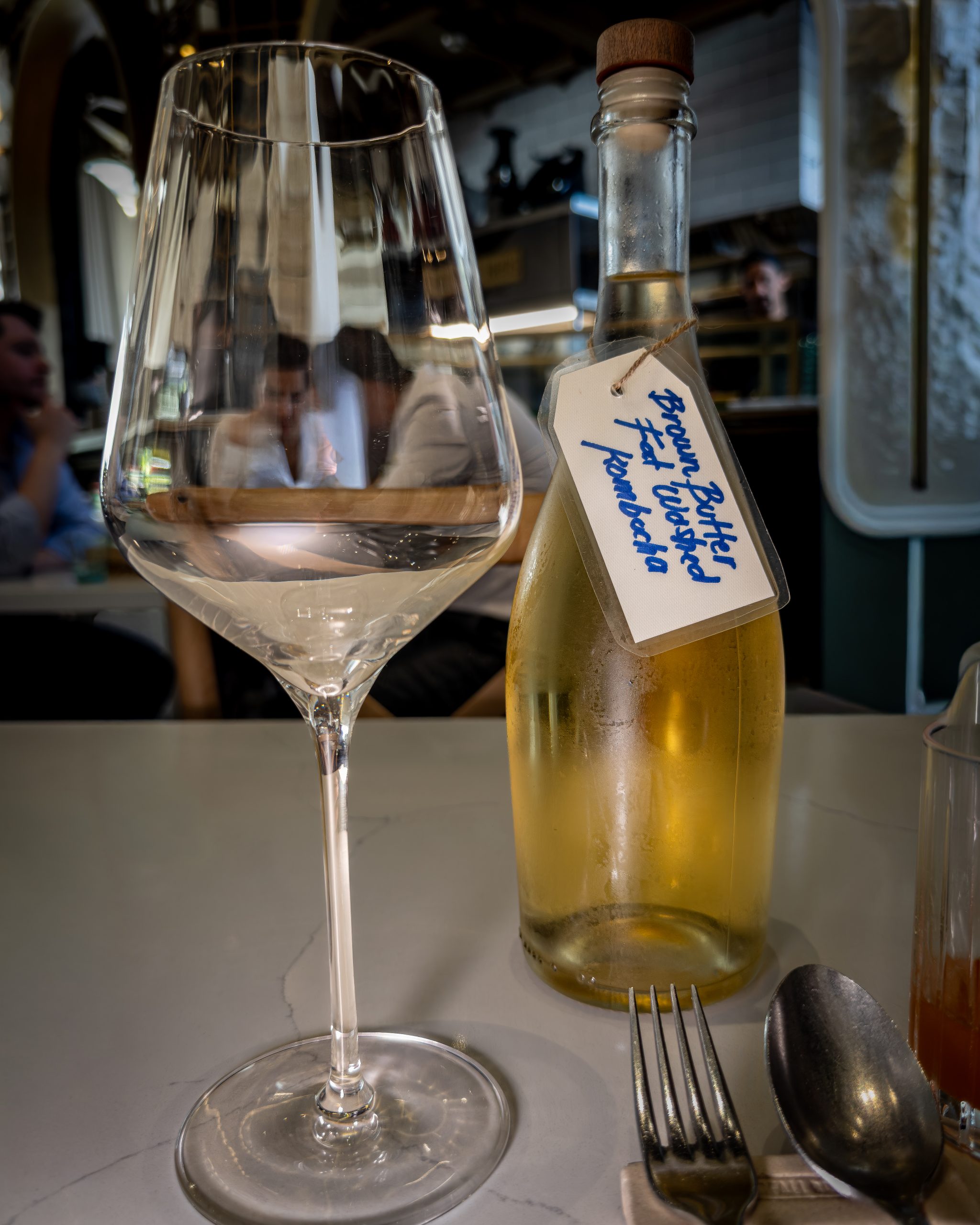Far from the Gulf
May. Dubai. The air vibrates, thick, as if the desert had decided to swallow the whole Dubai.
Jumeirah Wasl 51. Far from the gentle breeze of the Persian Gulf, far from balconies overlooking infinity. Here, the heat is direct, almost hostile – the kind of heat that questions all your choices.
But you push the door. Inside, the air is different – fresh, calm, open like a courtyard.
And you find the opposite of the Dubai you think you know. Orfali Bros doesn’t have the gleam of towers or the sound of luxury; there’s no gold on the walls, no Swarovski crystals hanging from the ceiling, none of that decorative exuberance the city displays like a second skin.
There’s simplicity. There’s light wood. There’s a room where the high ceiling breathes, where the kitchen opens completely to everyone’s view, where nothing tries to impress – except what comes out of that kitchen.
Orfali Bros presents itself, without complexes, as a bistro. And perhaps that’s why it’s so rare: because it’s honest.
The Democratic Paradox
There are restaurants that define their clientele. And then there’s Orfali Bros, which refuses that logic.
At one table, someone in shorts picks up a pide – the Levantine “pizza” that isn’t pizza – while at another, Hokkaido scallops rest on a perfectly calibrated ajoblanco. Nearby, an honest and technically impeccable wagyu burger. Further along, meticulous snacks featuring some of the world’s finest ingredients. No one seems out of place.
It may be the most democratic Michelin restaurant in the city. Perhaps the world’s. Not by concession, but by conviction.
The Orfali brothers – Mohamad in the main kitchen, Wassim and Omar in pastry – have built something rare: a space where fine dining and casual dining are in quiet dialogue. An impossible combination of a Neapolitan pizzeria with a Nordic 3-star, a world-class cocktail bar, a modern bistro, and a French patisserie – all wrapped in Syrian grandmothers’ cooking and served without artifice.
The team moves at a bistro’s rhythm – informal, attentive, friendly – but with the detailed knowledge you only find in starred dining rooms. They know how to explain each fermentation, each spice, each choice. And they do so without solemnity. Just with the naturalness of those who believe in what they serve.
The Alcohol-Free Manifesto
Here’s one of Dubai’s most elegant gastronomic ironies: Orfali Bros doesn’t have a license to sell alcoholic beverages.
The response? Build a drinks program that would make many award-winning bars blush with envy.
Infusions, kombuchas, tepaches, mocktails of disconcerting complexity – everything thought through in detail, with the same seriousness (or perhaps even more) that other restaurants dedicate to carefully selecting their wines. There are layers, controlled acidity, fermentation, spices, all in harmony with the dishes, chosen with the same obsession as a sommelier selecting a Premier Cru.
It’s not a provisional solution. It’s a statement of principles. And it works – because here you don’t miss the wine. There’s something else happening.
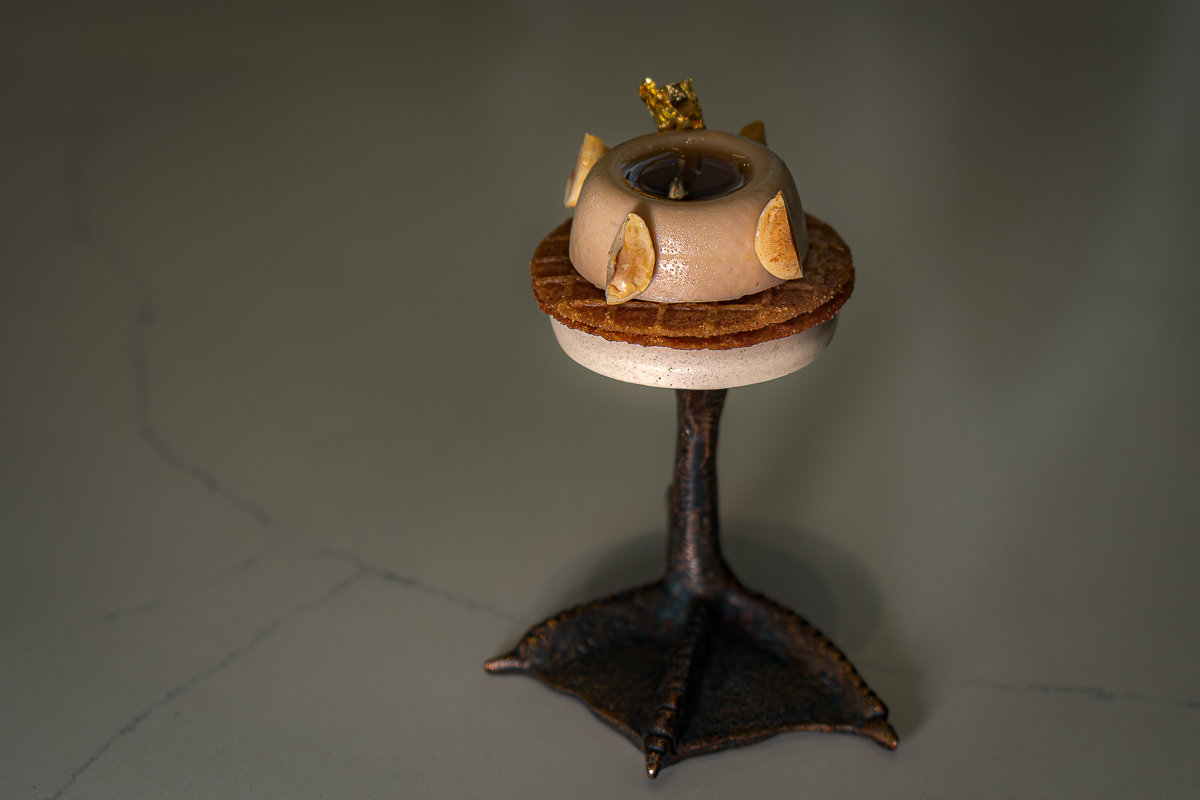
The Beginning: Between Luxury and Memory
The meal begins with sparkling. Not our beloved wine, but a drink made from fermented grapes served with a siphon. Bubbles without alcohol. It’s light, fresh, irreverent – like the house’s own spirit.
And then, richly, the Oohh La La, which is to say the Foie gras.
A snack that’s as indulgent as it is aesthetic. The foie gras appears covered, well-treated, and reinterpreted. The quince vinegar and nuances of hazelnut miso elevate the moment.
It’s not French. It’s not Arab. It’s both, and neither. It’s the first warning: this “bistro” knows how to play in a different league.
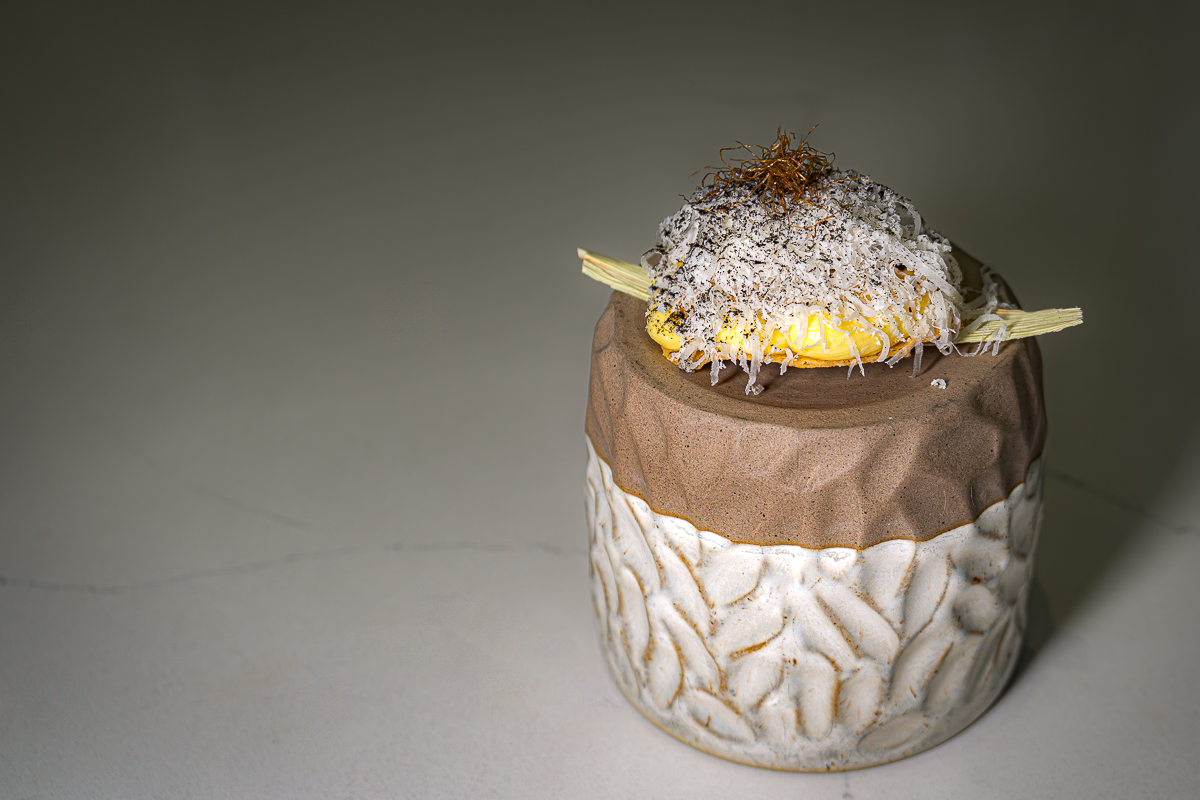
Textures, Layers, Flavor
Next comes the corn tostada.
A balance between salty and sweet, with various corn textures – including huitlacoche (the “Mexican truffle,” corn fungus), which adds umami notes – nicely contrasted by 36-month Parmigiano cheese.
There’s creaminess, there’s crunch, there’s deep umami. Mexico, reinterpreted through a Syrian mind.
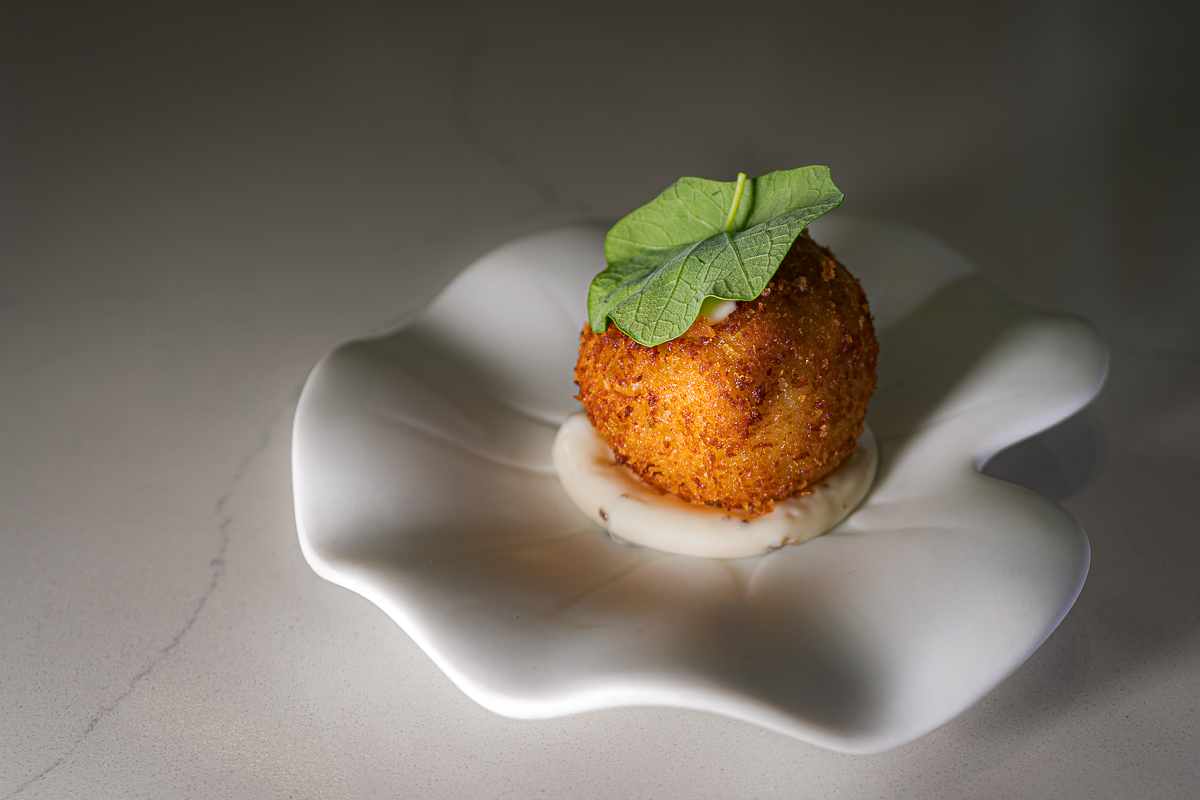
Then comes a croquette inspired by the Portuguese codfish cake.
Made from celery root, here with a subtle flavor aromating the béchamel (which I appreciate), paired with truffle mayonnaise. Competent, technically irreproachable. Just less memorable.
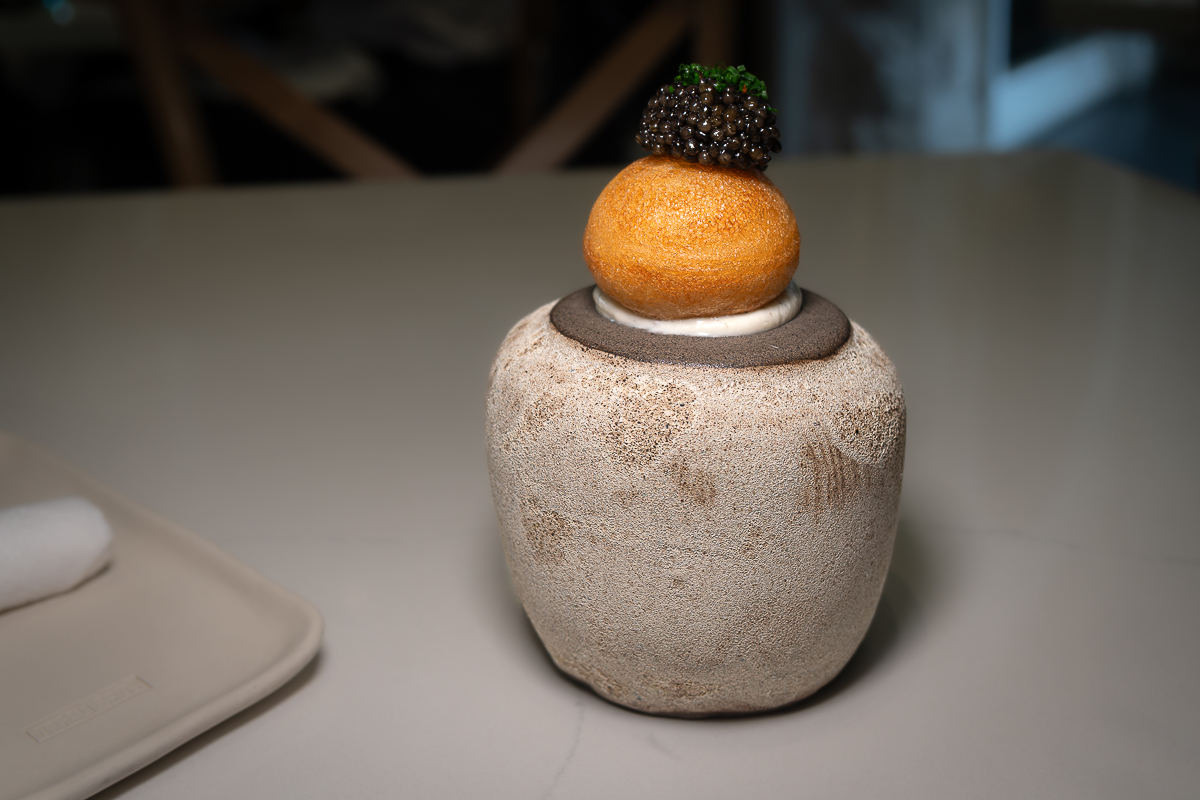
Next came the caviar bun.
With the “right” amount of caviar, and by right, I mean generous, in a play of salt, acidity, and slight spiciness from the smetana, all bound by a fluffy bun. I could eat a dozen. Without exaggeration: I really could.
Is it ostentation? Perhaps. But it’s honest ostentation, without arrogance. It’s a celebration of the product, not the price.
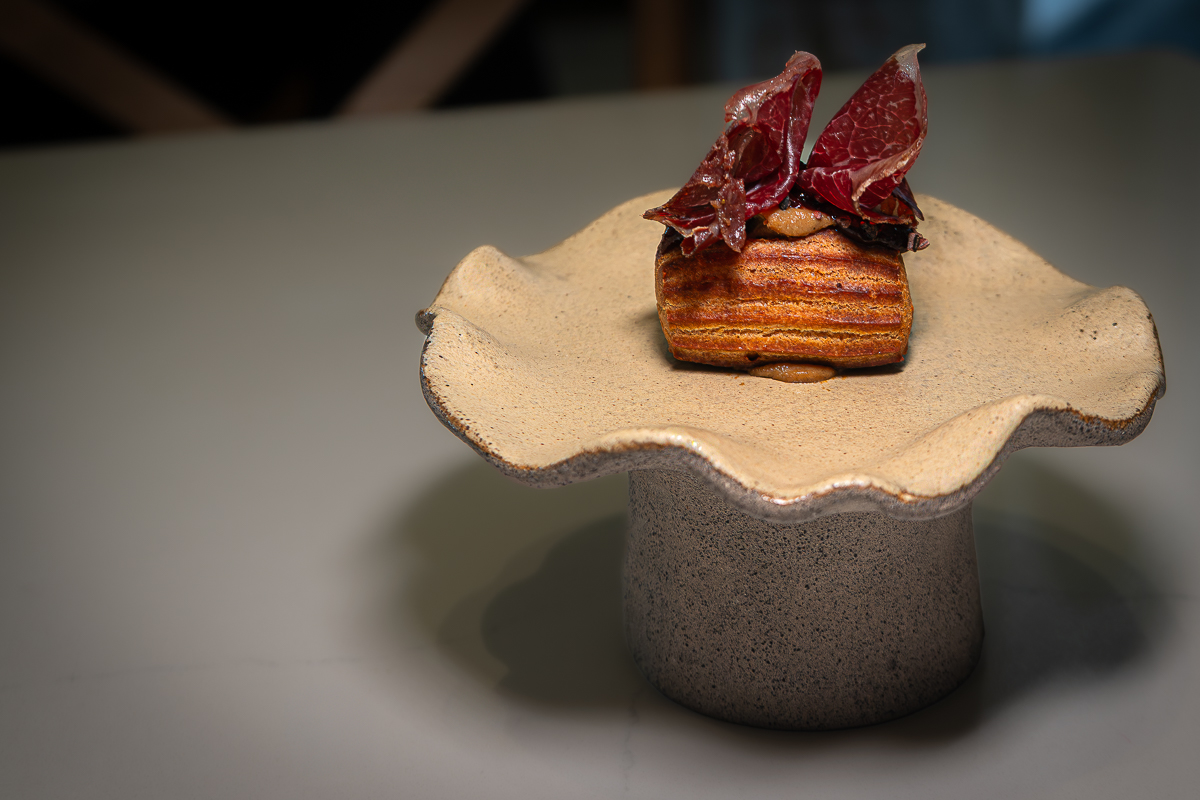
The Umami Bomb
Now on the table, the éclair.
It’s not a sweet éclair. It’s an umami bomb, a mix of pastry and alchemy. Filled with a porcini and Marmite emulsion (the British yeast extract paste), topped with quince glaze, cacao nibs, and, as the star of the show, a fantastic cecina. Accompanied by a raspberry and honey tepache, with controlled acidity and excellent freshness.
Flavors and textures that fill the entire mouth as if it were a full dish. It’s savory pastry at its most expressive. Daring, yet precise.
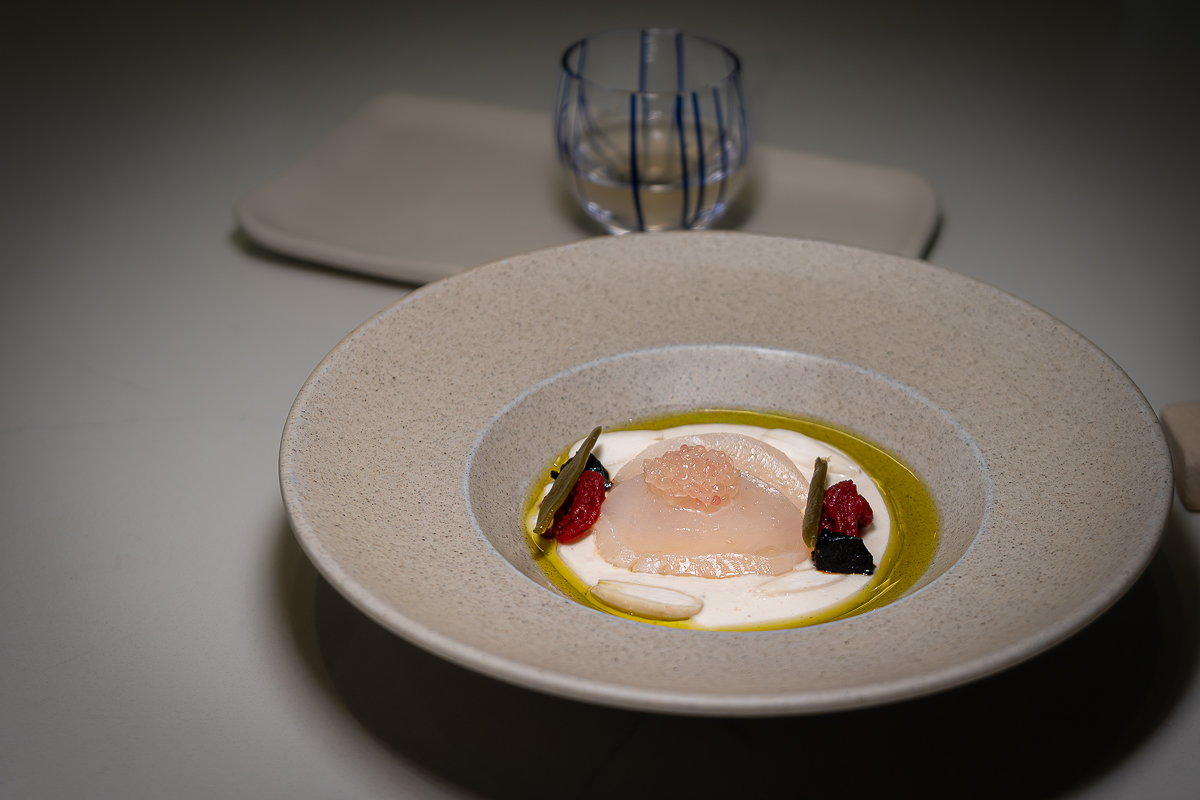
Between Japan, Andalusia, and Aleppo
A Japanese-based drink: prepared from barley koji, amazake (the sweet Japanese fermented rice drink), sudachi (Japanese citrus), wasabi, and kombu. Aromatic, complex, lightly sweet but with salty notes from the kombu.
Meanwhile, the ajoblanco arrives. Eyes closed, the sea, the almond, Andalusia on a plate.
Irreproachable on all levels. From the quality of the scallop – here from Hokkaido – served raw, to the contrast in flavor and freshness of the remaining elements.
The combination of tomato raisins with black garlic and the freshness of finger lime stand out, exploding in the mouth like small bombs of controlled acidity.
The ajoblanco is creamy yet light; the sea arrives through the scallop; the lime’s acidity cuts through everything, preventing the almond from becoming heavy. The tomato raisins bring concentrated sweetness. And the black garlic hovers like a shadow – present, but discreet. It’s edible poetry.
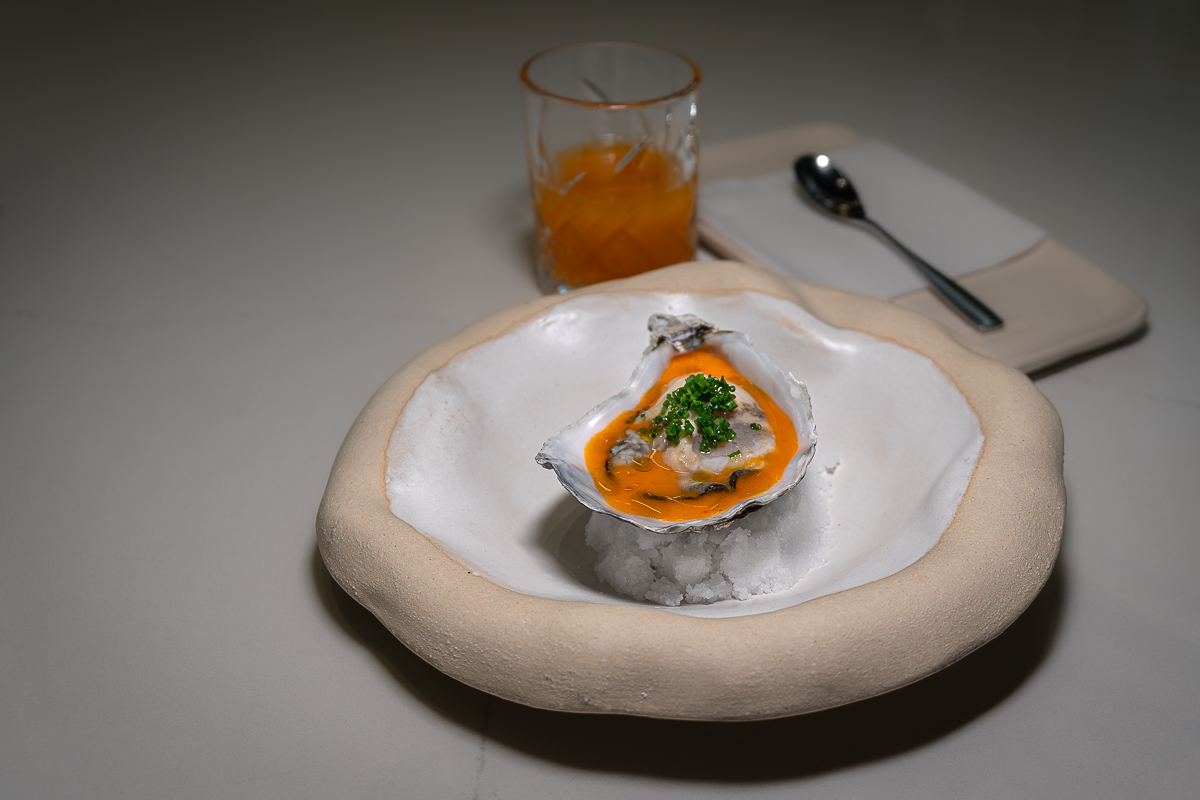
We continue with an oyster in a vibrant-colored sauce made from lacto-fermented tomato, chili, garlic, shallots, and koji.
The heat of fermentation doesn’t burn; it warms. It’s different. It’s controlled. The oyster is impeccable, fresh, briny. The sauce doesn’t hide it – it challenges it. And the oyster rises to the occasion.
Accompanied by a bright-colored drink made from toasted black rice and sea buckthorn. Lightly acidic, almost medicinal – but in a good way.
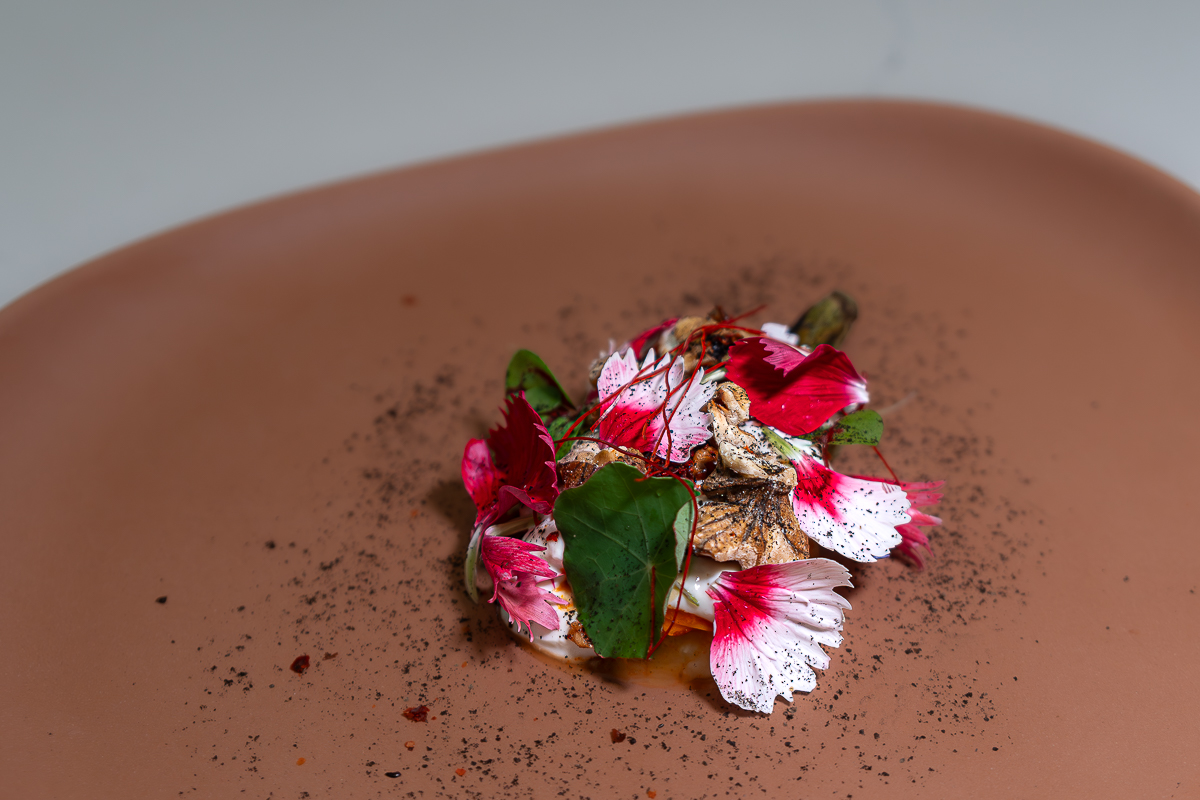
Middle East reimagined
Next came the smoked eggplant, grilled and marinated in chickpea miso.
Covered with makdous muhammara (made from peppers and a panoply of condiments that make it addictive), tarator (the typical tahini sauce), verjus, and walnuts.
A transformed and elevated moussaka, in a dish that takes us 100% to the Middle East, with its spices, the contrast of sweet flavors with freshness, and the play of textures.
There’s smoke, there’s creaminess, there’s acidity. There’s a memory of Syrian grandmothers, but there’s also a contemporary technique.
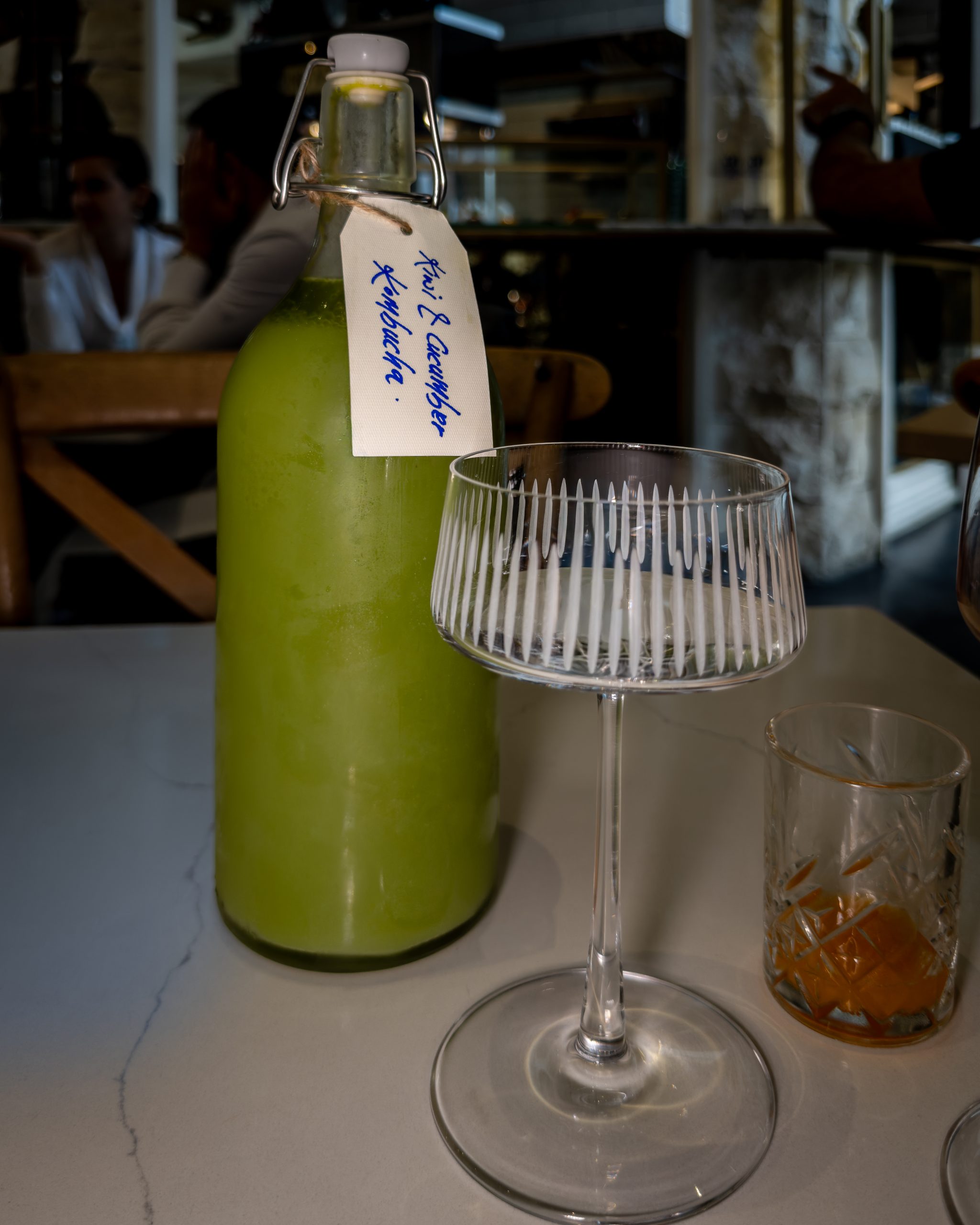
Around this time, a kombucha prepared with kiwi, cucumber, spinach, and shiso oil was being drunk. Super refreshing and balanced. Green, vibrant, alive.
We moved to Eat H: bulgur salad, Aleppo chili paste, tomato, puffed bulgur, and olive oil, on a shiso leaf.
Mohamad serves the dish in my hand, while saying simply, “Put it all together like a taco. You’ll taste my land.”
There’s no elaborate technique here. There’s respect. There’s generosity. There’s a gesture of tenderness that dispenses with cutlery and translates the house’s name: family. A moment that stays.
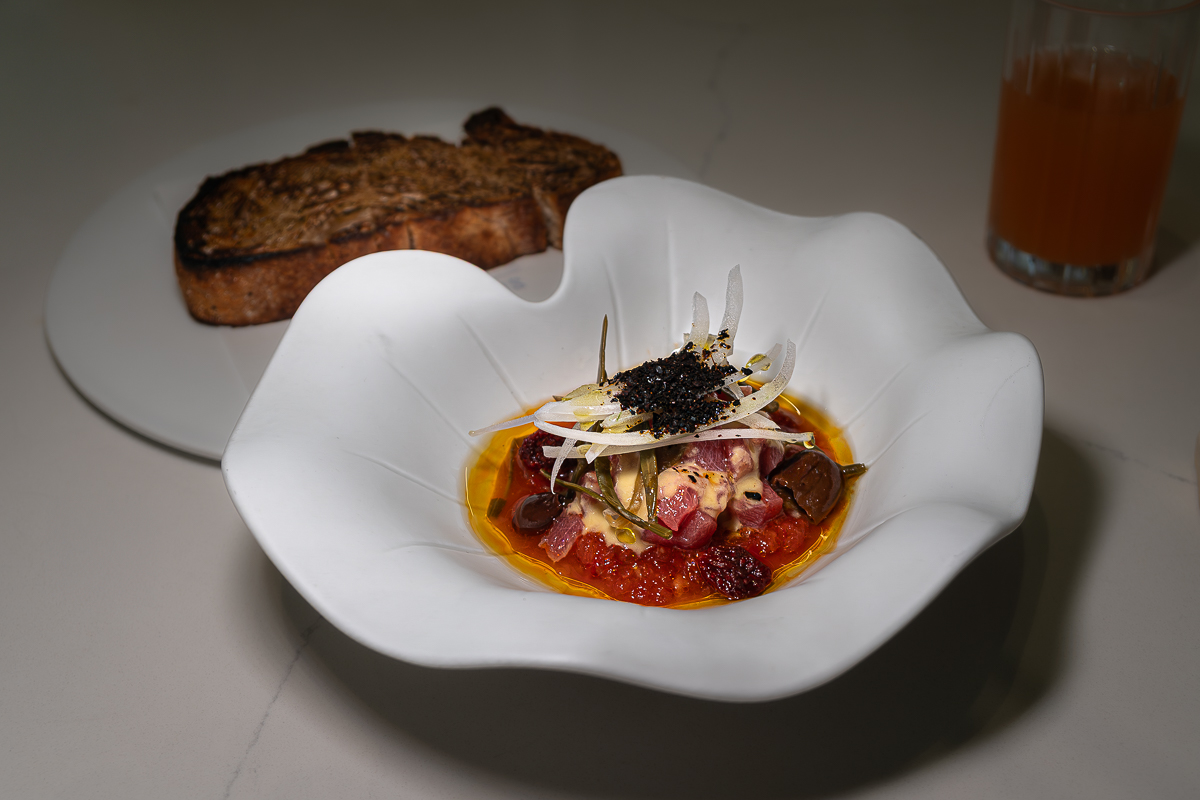
Holiday on a Plate
Journey to Spain and Latin America in a tuna with salsa roja.
Different parts of tuna, mixed with the remaining ingredients – fermented tomato, sea fennel, garlic, aji rocoto (Peruvian chili), tomato raisins, olive oil, and onion – and served with delicious sourdough toast.
A rich dish, perfect on a hot day. It tastes like vacation. It tastes like summer. It tastes like sea and sun.
The tuna is intense and richly seasoned. There are layers: first, the acidity of fermented tomato, then the controlled heat of rocoto, and finally the sweetness of raisins that balances everything.
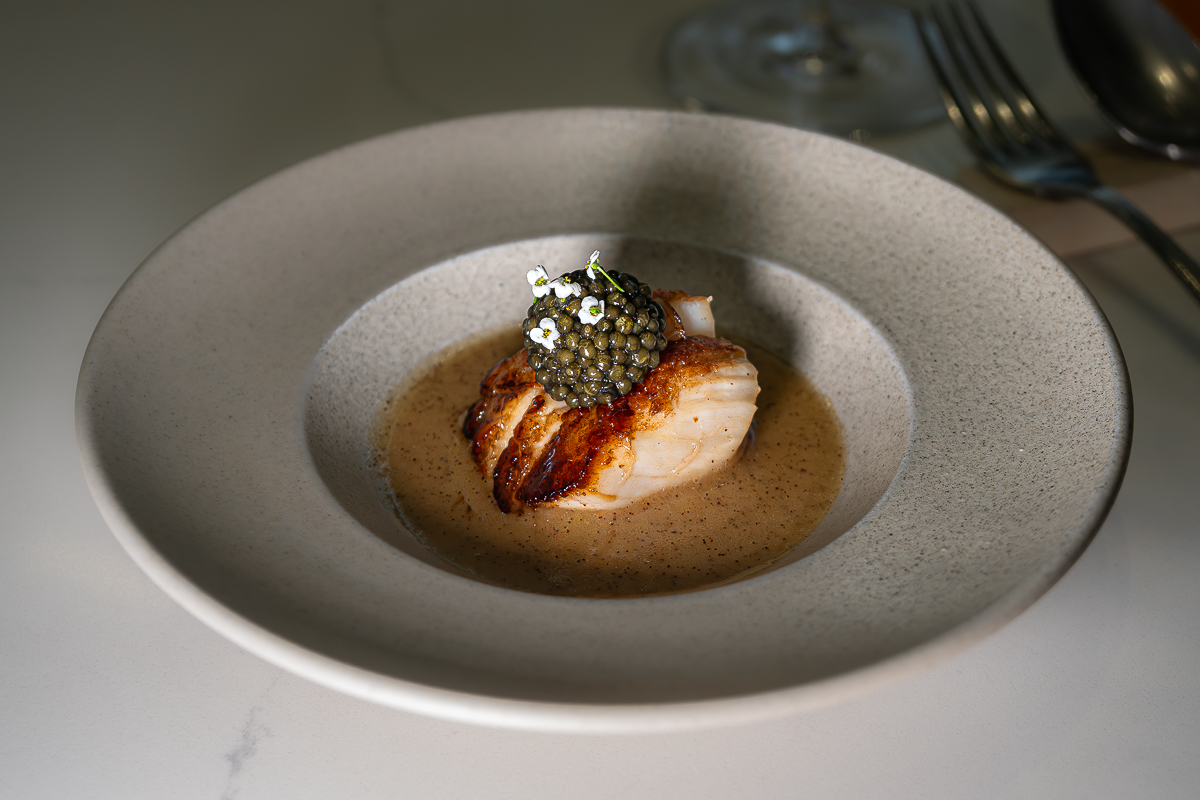
Heading North
To continue, the Nordic scallop.
Served with noisette butter sauce made with shio koji (the Japanese fermented rice paste). And another good dose of excellent N25 caviar.
Magnificent scallop quality. The richness and unctuousness of the sauce, with the caviar functioning as much more than a simple add-on, but as a source of balance.
The cooking is impeccable: the translucent, tepid center, contrasting with the exterior caramelization. The noisette butter sauce brings that velvety, toasted flavor; the shio koji adds umami and fermented sweetness.
The scallop is Nordic. The noisette butter, French. The shio koji, Japanese. The concept is universal. The result, Orfali.
The kombucha prepared with noisette butter fat wash is the perfect pairing.
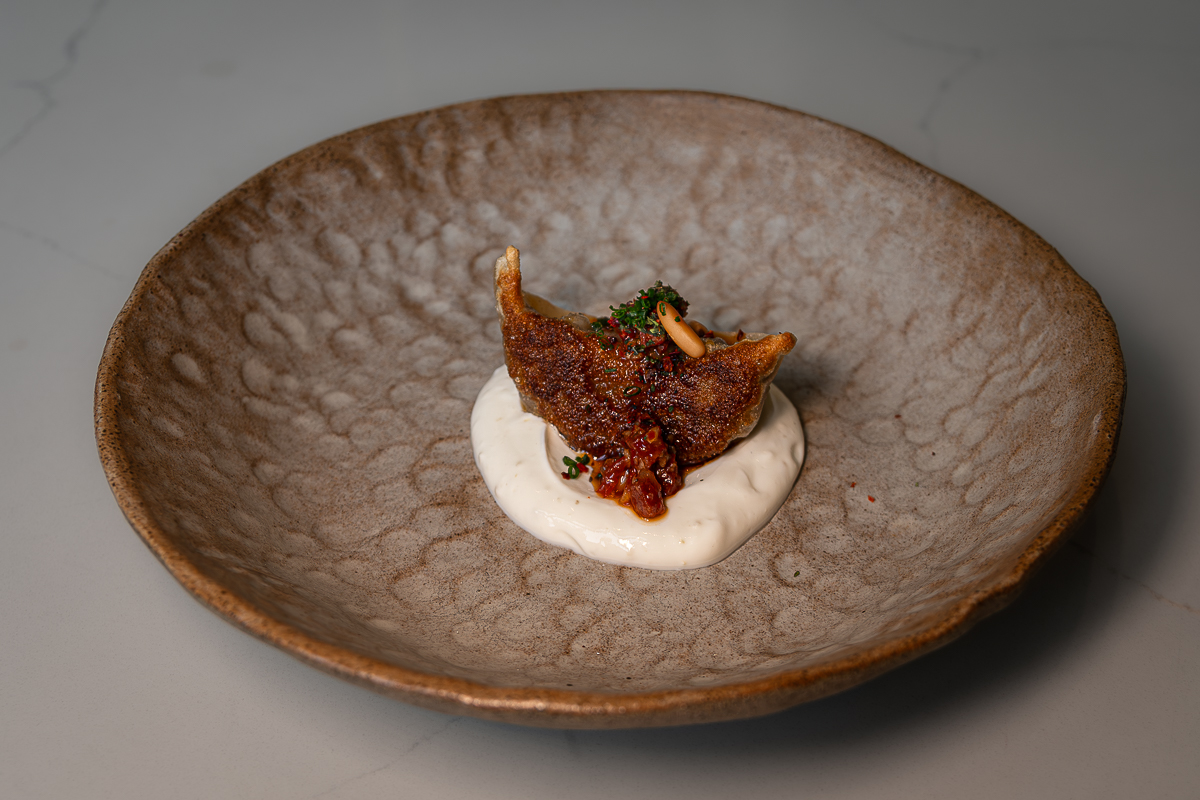
A Train from Japan to Aleppo
Next came the famous Lebanese dumplings – shish barak à la gyoza, with yogurt sauce.
Using a recipe from their mother, transforming it into a simultaneously soft and crispy gyoza, with an excellent yogurt sauce that respects tradition, while acidity is calibrated for the toasted gyoza texture.
It’s bold. It’s risky. It works because it doesn’t destroy memory – it reinterprets it. It’s not fusion for fusion’s sake. It’s the Silk Road with inspiring stops, and proof that you can respect grandmothers and, at the same time, design the future without cultural barriers.
I have a little one at home who would have a party with this dish – and that says it all.
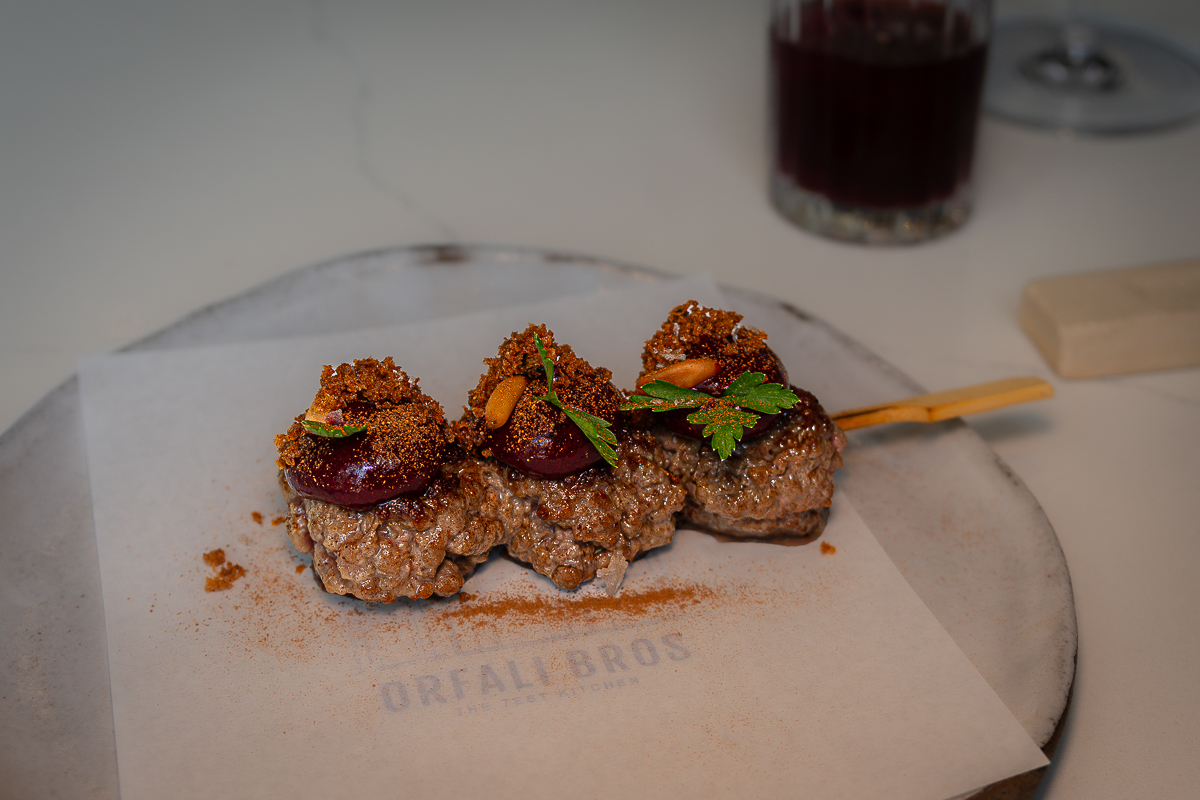
To end an already long journey, a dish with a simple appearance: Come With Me to Aleppo.
A minced wagyu kebab, sour cherry cream, parsley, cinnamon, and pine nuts.
Simple, tasty, and with various dimensions, where the meat’s fat and the balance of sour cherry cream stand out – bringing acidic and fruity sweetness, and cutting through the wagyu’s richness.
It’s not just a dish. It’s a tribute to the mosaic of diverse traditions and influences that made Syrian culture so rich and remarkable. Spices, memory, technique, emotion.
It’s personal. It’s political. It’s delicious.
The grape and sour cherry kombucha is the perfect “red” – there’s fruit, there’s acidity. It’s wine without being wine.
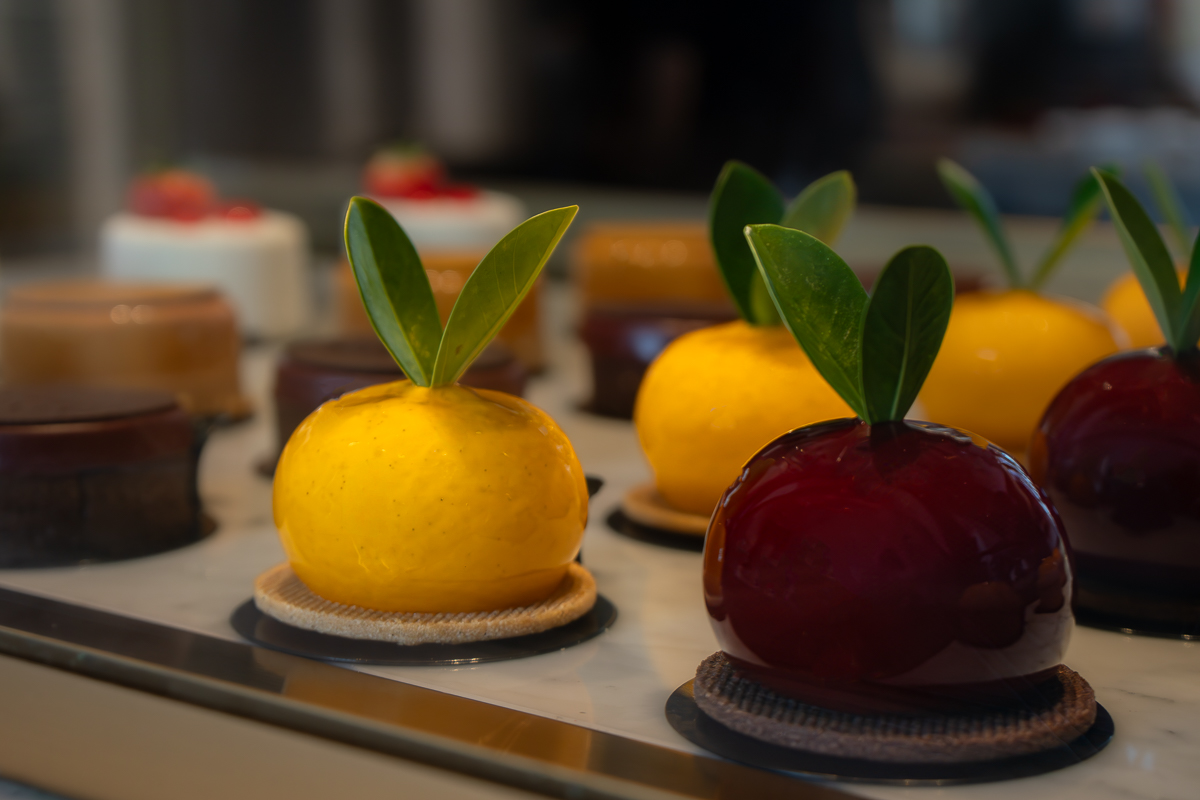
The desserts, tasted and shared in the tranquility of the hotel, are a French epilogue: mango and cherry, in clean, serene, balanced layers..
Both entremets, had meticulous execution and clean, serene layers, without excess creaminess or sweetness.
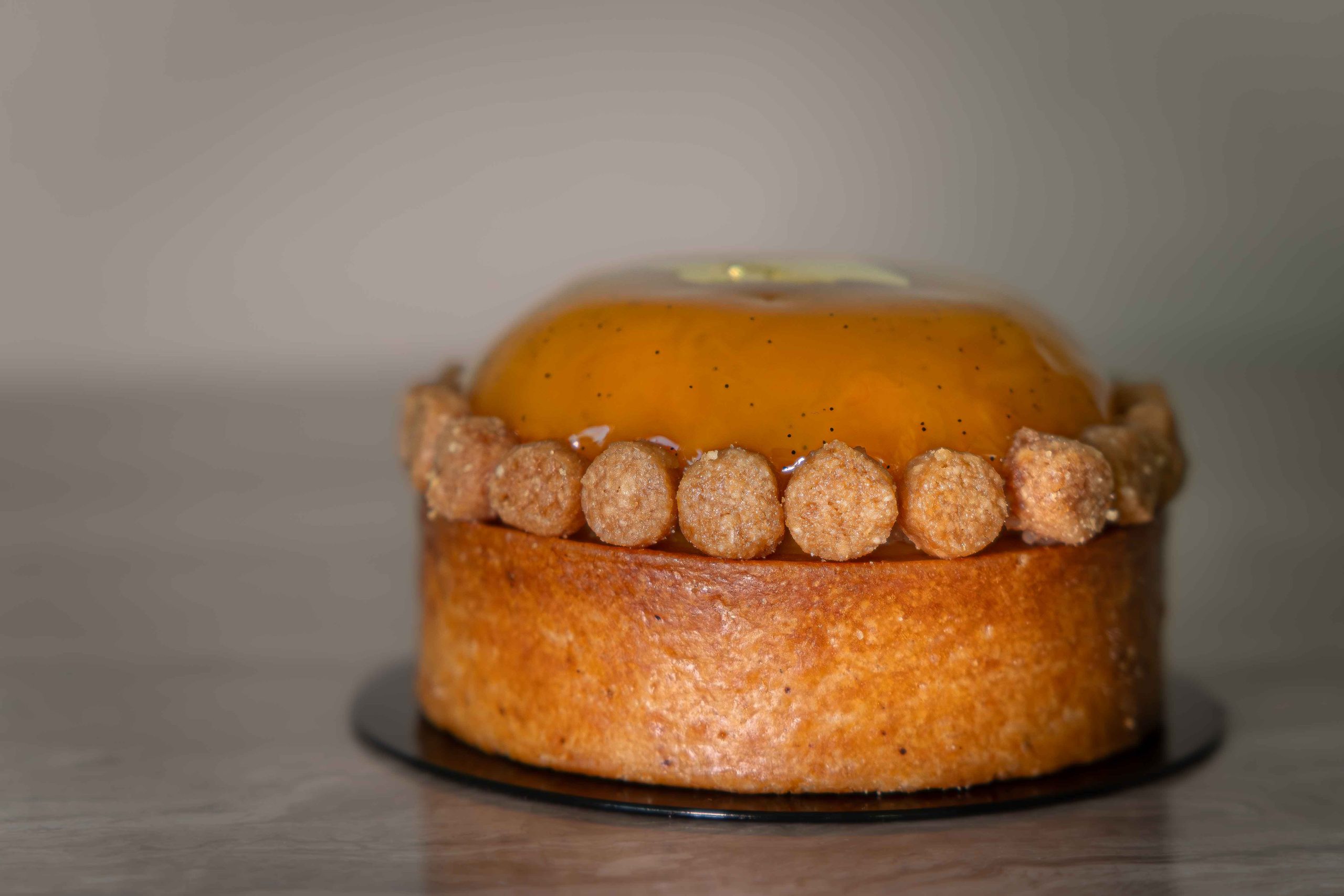
It’s France and the Middle East, because the brothers have already proven to us throughout lunch that there are no barriers.
Family. The Future
Mohamad Orfali rarely combines refined cooking technique with the natural showmanship of someone born to be on stage. There’s his own identity, there’s presence, there’s leadership. And he leads younger brothers Wassim and Omar, who followed in his footsteps and today transform Orfali Bros’ pastry into a reference in its own right.
But something is changing. The opening of Three Bros (next door, even more casual and relaxed) suggests natural evolution. Perhaps the burger and pizza side will migrate there. Perhaps Orfali Bros will transform into a more focused, more refined space.
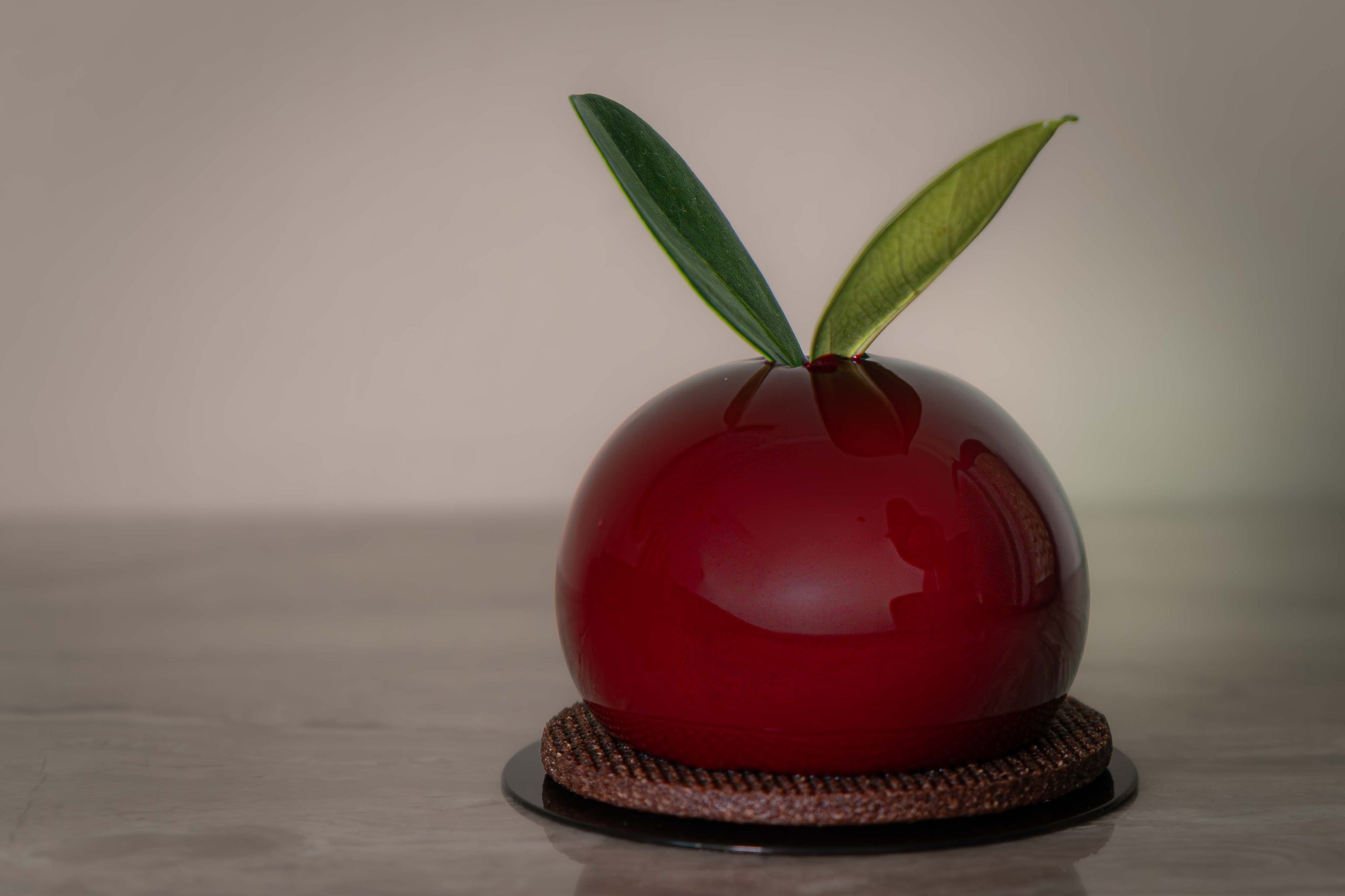
But the soul – that informal, fun, and family identity – will hardly disappear. Because it’s not something made with artifice. It’s the Orfali essence.
A Final Note
What does Orfali tell us about Dubai? That there’s room for everything. That the city isn’t just ostentation and gold – it’s also emotion, technique, and reinterpreted identity.
That contemporary Middle Eastern gastronomy has in Mohamad one of its most prominent faces. And that this face isn’t afraid to dialogue with the entire world.
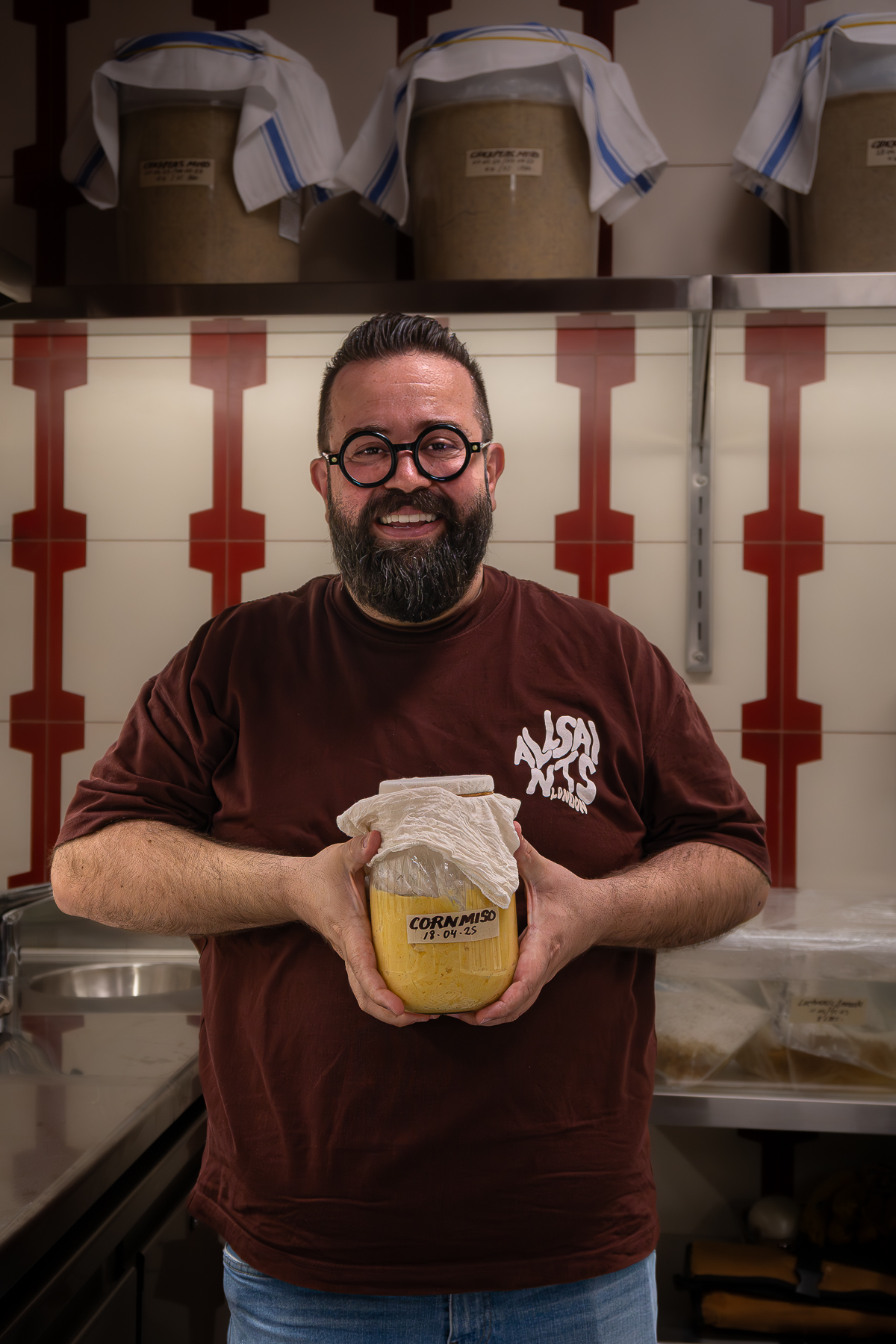
What really stands out is the combination of flavors – the fermentations, the spices, the unexpected notes that appear and transform each bite into a moment of discovery.
And the drinks: the kombucha, infusion, and mocktail program deserves, on its own, a bar in the World’s 50 Best.
It was a flawless meal. Which, in a menu this ambitious, is rare. Impressive for its consistency, maturity, and the relaxed way everything happens.
Also impressive for the fact that, in a few years, three brothers have created not one, but three successful concepts: Orfali Bros itself, Manao (one Michelin star, Thai-inspired cuisine), and now Three Bros.
What comes next? Hard to predict. But the path of Mohamad Orfali and his brothers will certainly be bright. Because they don’t lack talent. Technique, likewise. And this rare combination of strong identity, generosity, and ambition overflows from each dish, each gesture, each moment lived in that room.
In the end, Orfali Bros is what gastronomy should always be: imagination, family cohesion, emotion, and reinterpreted culture.
And that, that is something rare, precious. Something that deserves to be celebrated, repeated, and recommended.
I’ll return. As one returns home – or to a place that, even being new, tastes like memory.
Address — Wasl 51, Jumeirah 1, Dubai
Reservations — +971 54 584 3105
Hours — Daily, 12:00–24:00
Price Range — From €50
Don’t Miss — Caviar Bun, Éclair, Come With Me to Aleppo, Burger & Pide, Ferments and Non-Alcoholic Pairings
Chefs — Mohamad Orfali (with pastry by brothers Wassim & Omar Orfali)
Awards — 1 Michelin Star (2024) | #1 MENA’s 50 Best Restaurants (2023, 2024, 2025) | 37th in The World’s 50 Best Restaurants 2025

